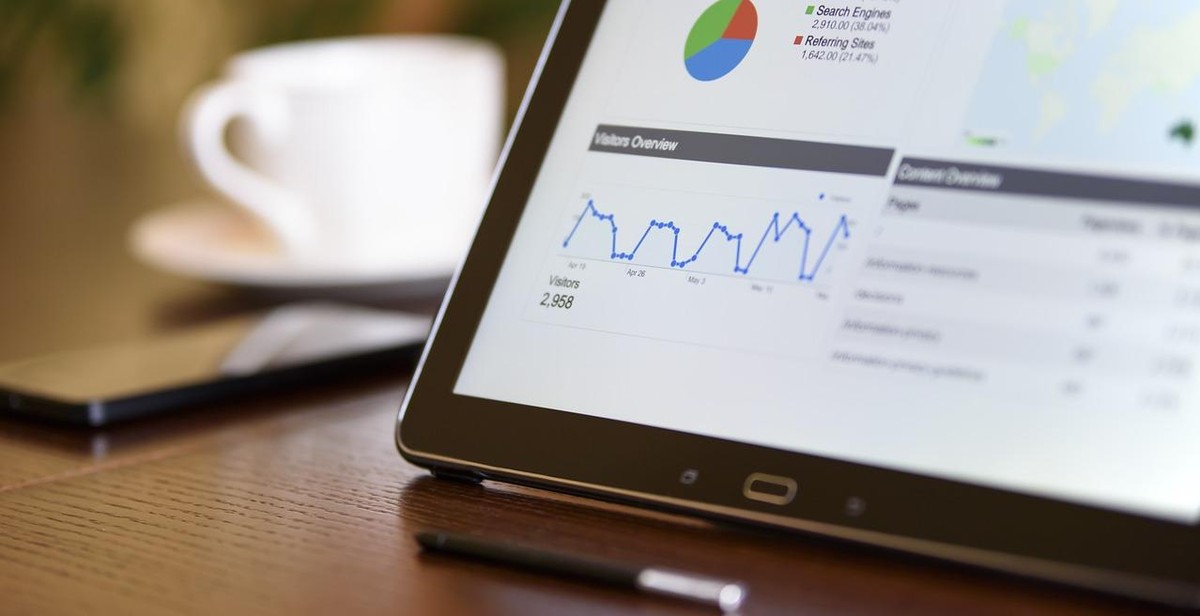How to Conduct Market Analysis: Gathering Insights for Business Decision-Making
Market analysis is the process of gathering data and insights about a particular market to help businesses make informed decisions. It involves studying the market size, trends, competition, customer behavior, and other factors that can affect a business’s success.
Why Market Analysis is Important
Market analysis is crucial for businesses of all sizes and industries. It helps them to:
- Identify new opportunities: By analyzing a market, businesses can discover new opportunities that they might have otherwise missed.
- Understand customer needs: Market analysis helps businesses to understand their customers’ needs and preferences, allowing them to tailor their products and services to meet those needs.
- Assess competition: By analyzing the competition, businesses can learn from their strengths and weaknesses, and develop strategies to gain a competitive advantage.
- Make informed decisions: Market analysis provides businesses with the data and insights they need to make informed decisions about their products, services, and marketing strategies.
Without market analysis, businesses risk making decisions based on assumptions or incomplete information, which can lead to costly mistakes.
In this article, we’ll provide you with a step-by-step guide on how to conduct market analysis, including the tools and techniques you can use to gather the insights you need to make informed business decisions.

Step 1: Define Your Business Objectives
Before conducting a market analysis, it is important to identify your business goals. What do you want to achieve? Are you trying to increase revenue, expand your business, or launch a new product or service? Defining your business objectives will help you determine which data to gather and analyze.
Identify Your Business Goals
Start by asking yourself what your business hopes to achieve. Your goals should be specific, measurable, achievable, relevant, and time-bound (SMART). For example, if you want to increase revenue, your goal may be to increase sales by 20% within the next year.
Once you have identified your business goals, you can determine which data to gather to help you achieve them. You may need to collect data on market trends, customer behavior, and competitor strategies.
Determine Your Target Market
Another important aspect of conducting a market analysis is determining your target market. Who is your ideal customer? What are their needs and preferences? Understanding your target market will help you tailor your products or services to meet their specific needs.
Start by creating a customer persona, which is a fictional representation of your ideal customer. You can use demographics, psychographics, and behavior patterns to create your customer persona. Once you have a clear understanding of your target market, you can gather data on their preferences, behaviors, and purchasing habits.
| Key Takeaways |
|---|
| 1. Defining your business objectives is the first step in conducting a market analysis. |
| 2. Your goals should be specific, measurable, achievable, relevant, and time-bound (SMART). |
| 3. Determine your target market by creating a customer persona. |
| 4. Gathering data on your target market will help you tailor your products or services to meet their needs. |

Step 2: Gather Data
Once you have defined your research objectives, the next step is to gather data. There are two main types of data that you can collect: primary research and secondary research.
Primary Research
Primary research involves collecting data directly from the source. This can be done through various methods such as surveys, interviews, focus groups, and observations.
- Surveys: Surveys are a common method of primary research. They involve asking a set of questions to a group of people to gather their opinions or feedback. Surveys can be conducted online, over the phone, or in person.
- Interviews: Interviews involve one-on-one conversations with individuals to gather their insights and opinions. Interviews can be conducted in person or over the phone.
- Focus Groups: Focus groups involve bringing together a group of people to discuss a particular topic or product. A moderator leads the discussion and gathers insights from the group.
- Observations: Observations involve watching and recording people’s behavior in a particular setting. This method is commonly used in retail and hospitality industries to understand customer behavior.
Secondary Research
Secondary research involves collecting data from existing sources such as published reports, articles, and databases. This method is cost-effective and can provide valuable insights into market trends and competitors.
- Published Reports: Published reports from research firms and industry associations can provide valuable insights into market trends, consumer behavior, and competition.
- Articles: Articles from industry publications and news sources can provide insights into industry trends and best practices.
- Databases: Databases such as Hoovers, IBISWorld, and Statista can provide data on industry statistics, market trends, and competitor analysis.
| Primary Research | Secondary Research |
|---|---|
| Collects data directly from the source | Collects data from existing sources |
| Can be expensive and time-consuming | Cost-effective and time-efficient |
| Provides specific and detailed insights | Provides broader insights into market trends and competition |
Both primary and secondary research methods have their advantages and disadvantages. It is important to choose the method that best suits your research objectives and budget.

Step 3: Analyze Your Data
After gathering the necessary data, the next step is to analyze it to gain valuable insights for business decision-making. Two crucial methods for analyzing market data are SWOT analysis and competitor analysis.
SWOT Analysis
SWOT analysis is a strategic planning tool that helps businesses identify their strengths, weaknesses, opportunities, and threats. This analysis helps businesses determine their competitive advantages and disadvantages and develop strategies to capitalize on opportunities and mitigate threats.
- Strengths: Identify the unique selling propositions of your business. What are your competitive advantages compared to your competitors?
- Weaknesses: Identify the areas where your business needs to improve. What are your competitive disadvantages compared to your competitors?
- Opportunities: Identify the potential opportunities for growth and expansion in your market. What are the trends and changes in your market that you can capitalize on?
- Threats: Identify the potential threats to your business. What are the external factors that can negatively impact your business?
Competitor Analysis
Competitor analysis is another essential method for analyzing market data. This analysis helps businesses understand their competitors’ strengths and weaknesses, their market position, and their strategies. By understanding their competitors, businesses can develop strategies to gain a competitive advantage.
| Factors to Analyze | Description |
|---|---|
| Market Share | Calculate the percentage of the market share your competitors hold. |
| Product/Service Offerings | Analyze the products or services your competitors offer, their quality, pricing, and marketing strategies. |
| Target Audience | Identify the demographics and psychographics of your competitors’ target audience. |
| Marketing Strategies | Analyze your competitors’ marketing strategies, including their advertising, promotions, and social media activities. |
| SWOT Analysis | Analyze your competitors’ strengths, weaknesses, opportunities, and threats. This analysis helps you identify your competitors’ competitive advantages and disadvantages. |
By conducting a thorough SWOT analysis and competitor analysis, businesses can gain valuable insights into their market and develop effective strategies for growth and success.

Step 4: Draw Conclusions and Make Decisions
After gathering insights from your market analysis, the next step is to draw conclusions and make informed decisions. This is a crucial step that will determine the success of your business. Here are some things to keep in mind:
Identify Opportunities and Threats
One of the main goals of a market analysis is to identify opportunities and threats in the market. Based on the data you have collected, you should be able to identify areas where your business can thrive and areas where you need to be cautious. For example, if you are launching a new product, you need to identify if there is a demand for it in the market. If there is, then you can proceed with confidence. If there isn’t, then you need to re-evaluate your strategy.
Make Informed Decisions
Once you have identified opportunities and threats, you need to make informed decisions. This means using the insights you have gathered to make decisions that will help your business grow. For example, if you have identified a gap in the market that your business can fill, you need to develop a product or service that meets that need. If you have identified a competitor that is a threat to your business, you need to develop a strategy to counteract their impact.
It’s important to remember that the decisions you make based on your market analysis should be data-driven. This means using the insights you have gathered to make decisions that are grounded in reality, rather than relying on gut instinct or assumptions. By using data to inform your decisions, you can be confident that you are making the best choices for your business.
Conclusion
In conclusion, conducting a market analysis is a critical step in any business strategy. By gathering insights, identifying opportunities and threats, and making informed decisions, you can position your business for success. Remember to use data to inform your decisions and to stay up-to-date with changes in the market. With these tools, you can confidently navigate the ever-changing business landscape and achieve your goals.

Conclusion
Conducting market analysis is crucial for businesses to make informed decisions and stay competitive in the market. By gathering insights about the market, businesses can identify opportunities, understand customer needs and preferences, and make strategic decisions that can help them grow and succeed.
Market analysis involves collecting and analyzing data from various sources, such as industry reports, customer surveys, and competitor analysis. It requires a systematic approach and a deep understanding of the market and industry trends.
When conducting market analysis, it’s important to keep in mind that the insights gathered are only as good as the data collected. Therefore, it’s essential to use reliable sources and collect data that is relevant to the business’s goals and objectives.
Overall, market analysis is an ongoing process that requires continuous monitoring and evaluation. By staying up-to-date with market trends and changes, businesses can adjust their strategies and stay ahead of the competition.
Key Takeaways
- Market analysis is critical for businesses to make informed decisions and stay competitive.
- Market analysis involves collecting and analyzing data from various sources.
- Reliable sources and relevant data are essential for accurate insights.
- Market analysis is an ongoing process that requires continuous monitoring and evaluation.
| Need Help With Your Market Analysis? | Contact our team of experts to help you gather and analyze market insights that can drive your business’s growth and success. |
